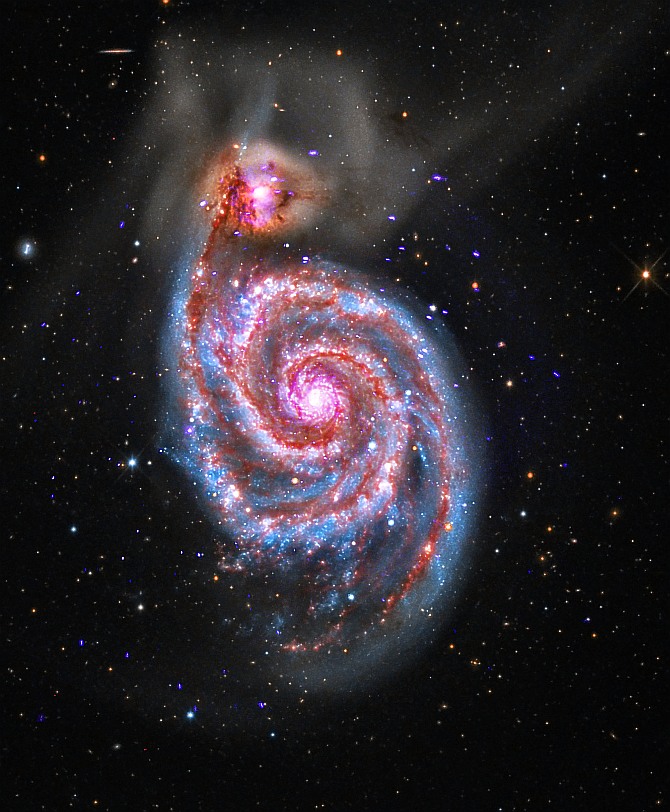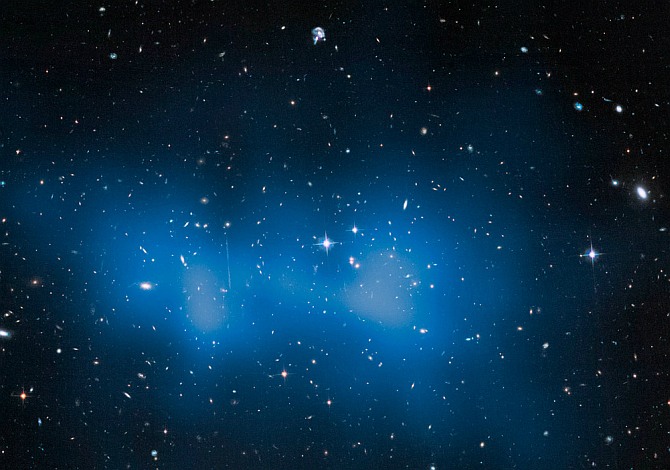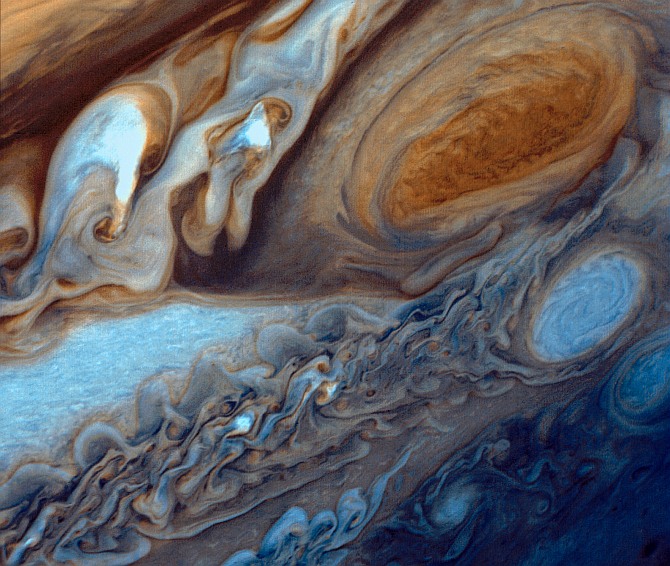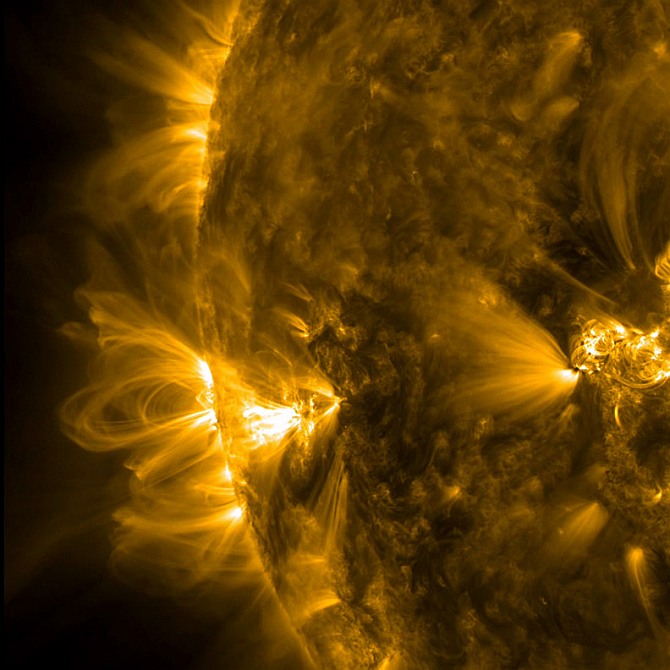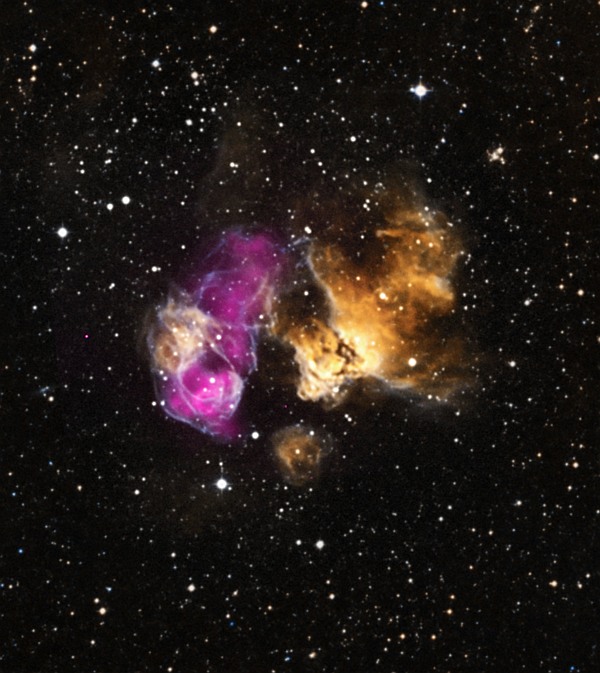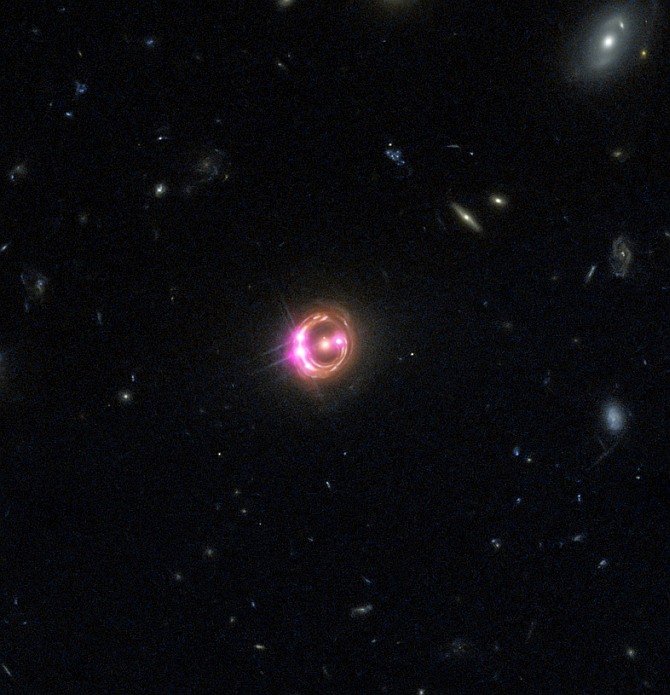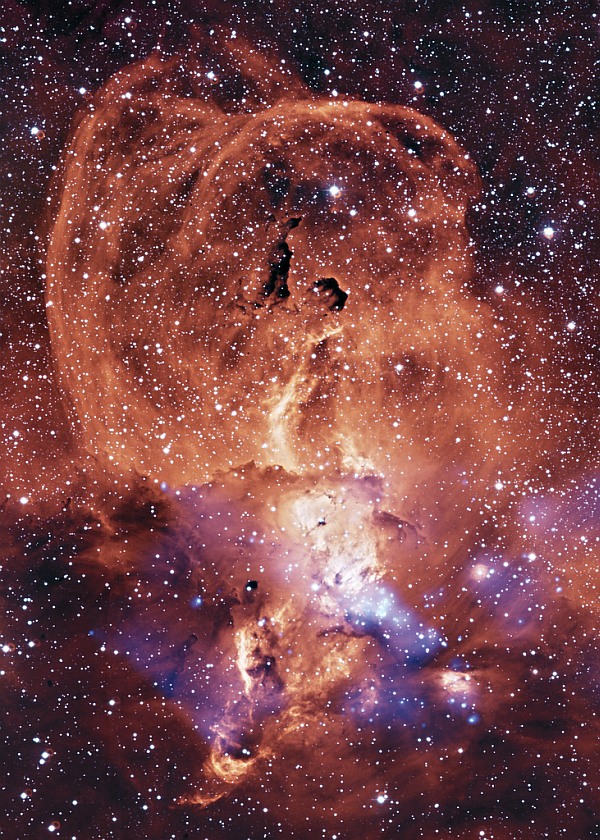 | « Back to article | Print this article |
The spectacular world beyond ours
Rediff.com brings for its readers some of the best images of the outer world provided by the US National Aeronautics and Space Administration and leading astronomers.
M51, a spiral galaxy, about 30 million light years away is in the process of merging with a smaller galaxy seen to its upper left. This image is part of a ‘quarter of galaxies’ collaboration of professional and amateur astronomers that combines optical data from amateur telescopes with data from the archives of NASA missions.
Click NEXT to see more PHOTOS...
The spectacular world beyond ours
Galaxy NGC 4485 in the constellation of Canes Venatici (Hunting Dogs) is irregular in shape. But it wasn’t always so. Part of the galaxy has been dragged towards a second galaxy named NGC 4490. The trail of bright stars and knotty orange clumps that we see here extending out from NGC 4485 is all that connects them -- a trail that spans some 24,000 light years.
Click NEXT to see more PHOTOS...
The spectacular world beyond ours
This image shows one of the clusters, NGC 2024, which is found in the center of the so-called Flame Nebula about 1,400 light years from Earth. In this image, X-rays from Chandra are seen as purple, while infrared data from NASA’s Spitzer Space Telescope are coloured red, green, and blue.
According to the new results, the stars at the center of NGC 2024 were about 200,000 years old while those on the outskirts were about 1.5 million years in age.
Click NEXT to see more PHOTOS...
The spectacular world beyond ours
Messier 5 (M5) is now known to be a globular star cluster, 100,000 stars or more, bound by gravity and packed into a region around 165 light-years in diameter. It lies some 25,000 light-years away. M5 is one of the oldest globulars, its stars estimated to be nearly 13 billion years old.
Click NEXT to see more PHOTOS...
The spectacular world beyond ours
This is a composite image of X-rays from Chandra and optical data from Hubble of the galaxy cluster ACT-CL J0102-4915, located about seven billion light years from Earth. This cluster has been nicknamed ‘El Gordo’ (or, ‘the fat one’ in Spanish) because of its gigantic mass. New data from the Hubble Space Telescope suggests El Gordo weighs as much as three million billion times the mass of our Sun.
Click NEXT to see more PHOTOS...
The spectacular world beyond ours
This new Hubble image is centered on NGC 5793, a spiral galaxy over 150 million light years away in the constellation of Libra. This galaxy has two particularly striking features: a beautiful dust lane and an intensely bright center -- much brighter than that of our own galaxy, or indeed those of most spiral galaxies we observe. NGC 5793 is a Seyfert galaxy. These galaxies have incredibly luminous centers that are thought to be caused by hungry supermassive black holes.
Click NEXT to see more PHOTOS...
The spectacular world beyond ours
At about 89,000 miles in diameter, Jupiter could swallow 1,000 Earths. It is the largest planet in the solar system and perhaps the most majestic. Vibrant bands of clouds carried by winds that can exceed 400 miles per hour continuously circle the planet’s atmosphere. In January and February 1979, NASA’s Voyager 1 spacecraft zoomed toward Jupiter, capturing hundreds of images during its approach, including this close-up of swirling clouds around Jupiter’s Great Red Spot. This image was assembled from three black and white negatives.
Click NEXT to see more PHOTOS...
The spectacular world beyond ours
Roguish runaway stars can have a big impact on their surroundings as they plunge through the Milky Way galaxy. Their high-speed encounters shock the galaxy, creating arcs, as seen in this newly released image from NASA’s Spitzer Space Telescope.
In this case, the speedster star is known as Kappa Cassiopeiae, or HD 2905 to astronomers. It is a massive, hot supergiant moving around 2.5 million. But what really makes the star stand out in this image is the surrounding, streaky red glow of material in its path. Such structures are called bow shocks, and they can often be seen in front of the fastest, most massive stars in the galaxy.
Click NEXT to see more PHOTOS...
The spectacular world beyond ours
An active region of the sun just rotating into the view of NASA’s Solar Dynamics Observatory gives a profile view of coronal loops over about a two-day period. Coronal loops are found around sunspots and in active regions. These structures are associated with the closed magnetic field lines that connect magnetic regions on the solar surface. Many coronal loops last for days or weeks, but most change quite rapidly. This image was taken in extreme ultraviolet light.
Click NEXT to see more PHOTOS...
The spectacular world beyond ours
This image shows a composite view of the Crab Nebula, an iconic supernova remnant in our Milky Way galaxy, as viewed by the Herschel Space Observatory and the Hubble Space Telescope. A wispy and filamentary cloud of gas and dust, the Crab Nebula is the remnant of a supernova explosion that was observed by Chinese astronomers in the year 1054.
Click NEXT to see more PHOTOS...
The spectacular world beyond ours
When a massive star runs out fuel, it collapses and explodes as a supernova. Although these explosions are extremely powerful, it is possible for a companion star to endure the blast. A team of astronomers using NASA’s Chandra X-ray Observatory and other telescopes has found evidence for one of these survivors. This hardy star is in a stellar explosion’s debris field.
Click NEXT to see more PHOTOS...
The spectacular world beyond ours
An optical image, from the Digitised Sky Survey, of a large field centered on the Flame Nebula. A comparison with the composite image from Chandra and Spitzer -- shown as an overlay -- demonstrates how powerful X-ray and infrared images are for studying star forming regions. The central cluster of stars, NGC 2024, is clearly observed in the X-ray and optical images but is not visible in the optical image.
Click NEXT to see more PHOTOS...
The spectacular world beyond ours
Multiple images of a distant quasar are visible in this combined view from NASA’s Chandra X-ray Observatory and the Hubble Space Telescope. The Chandra data were used to directly measure the spin of the supermassive black hole powering this quasar. This is the most distant black hole where such a measurement has been made, as reported in our press release.
The quasar is known as RX J1131-1231, located about six billion light years from Earth.
Click NEXT to see more PHOTOS...
The spectacular world beyond ours
Just weeks after NASA’s Chandra X-ray Observatory began operations in 1999, the telescope pointed at Centaurus A. This galaxy, at a distance of about 12 million light years from Earth, contains a gargantuan jet blasting away from a central supermassive black hole.
In this image, the lowest-energy X-rays Chandra detects are in red, while the medium-energy X-rays are green, and the highest-energy ones are blue.
Click NEXT to see more PHOTOS...
The spectacular world beyond ours
A region of glowing gas in the Sagittarius arm of the Milky Way galaxy, NGC 3576 is located about 9,000 light years from Earth. Such nebulas present a tableau of the drama of the evolution of massive stars, from the formation in vast dark clouds, their relatively brief (a few million years) lives, and the eventual destruction in supernova explosions.
Click NEXT to see more PHOTOS...
The spectacular world beyond ours
When radiation and winds from massive young stars impact clouds of cool gas, they can trigger new generations of stars to form. This is what may be happening in this object known as the Elephant Trunk Nebula (or its official name of IC 1396A). X-rays from Chandra (purple) have been combined with optical (red, green, and blue) and infrared (orange and cyan) to give a more complete picture of this source.
Click NEXT to see more PHOTOS...
